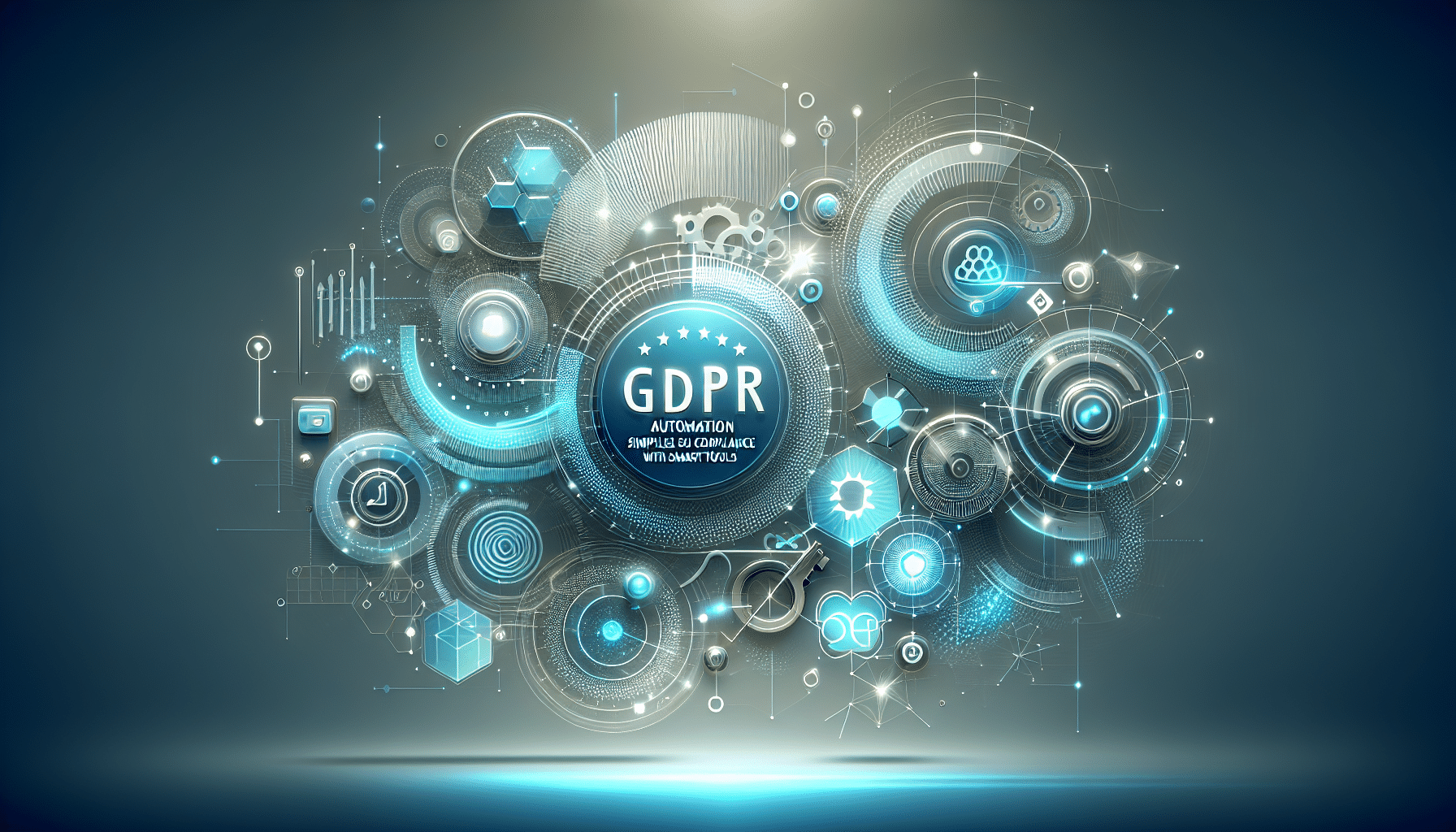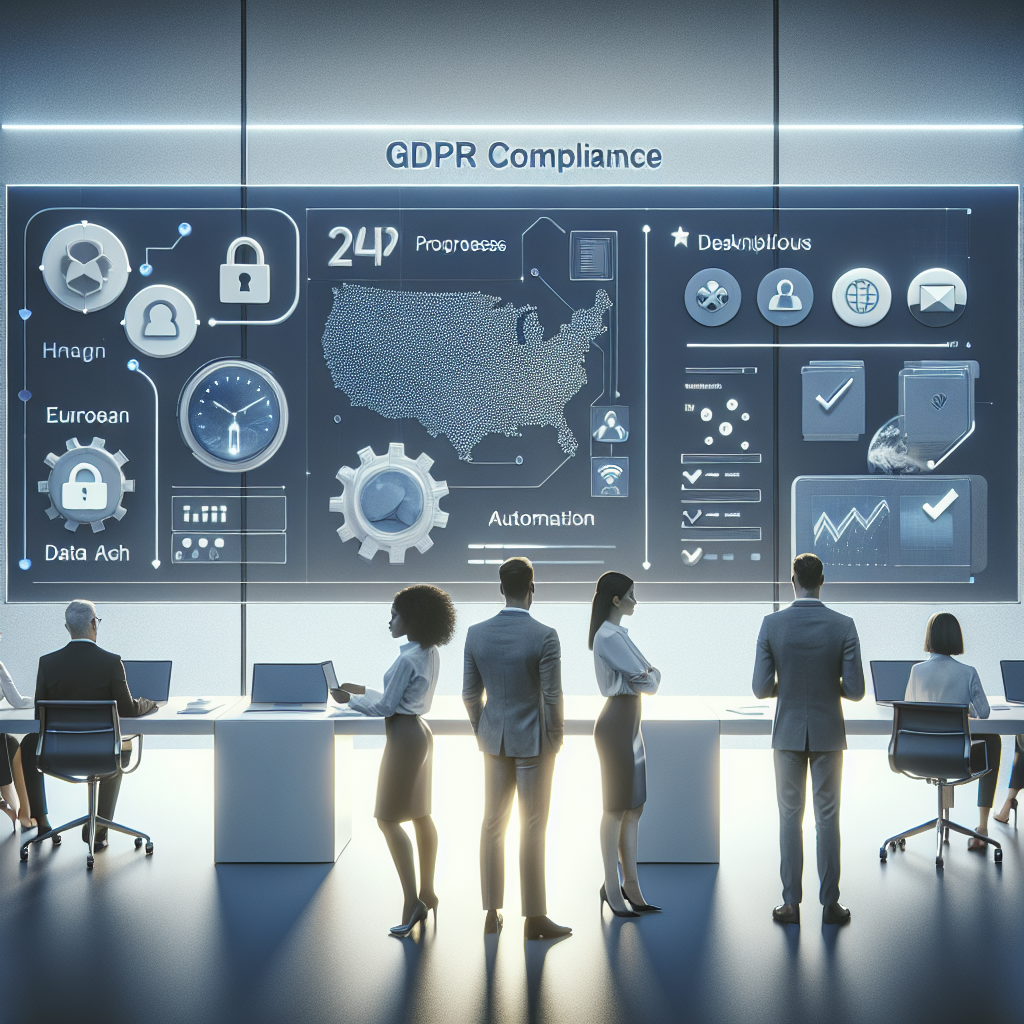About eldris
At Eldris, we automate SEO, multilingual site expansion, and EU compliance for brands scaling across Europe. Our AI-powered platform handles everything from content publishing to regulatory docs—so you don’t have to.
In This Article
- GDPR automation reduces the risk of non-compliance and costly fines.
- Manual compliance is prone to error and unsustainable at scale.
- Consent and DSAR processes can be streamlined with automation.
- Real-time monitoring helps organisations stay ahead of shifting regulations.
- AI-powered features offer predictive risk analysis and data mapping capabilities.
- Privacy by design is reinforced through automation integration.
- Platforms cater to businesses of all sizes with scalable features.
- Continual training and review are essential to keep systems effective.
The Challenge of Complying with GDPR Manually
Why Traditional Means Fall Short
Implementing the General Data Protection Regulation (GDPR) via manual methods can quickly become an overwhelming endeavour. GDPR automation is gaining traction for good reason—manual compliance typically involves countless spreadsheets, siloed systems, email correspondence, and ad hoc documentation, all prone to human error. As the responsibilities of data protection officers increase, legacy workflows no longer suffice. Scenarios such as responding to Data Subject Access Requests (DSARs) within tight deadlines, maintaining up-to-date records of processing activities, or coordinating with various departments for lawful processing just aren’t feasible at scale through manual action. Especially for large organisations operating across multiple jurisdictions, the burden escalates rapidly.

The Rise of GDPR Automation Technologies
Evolution of Compliance Tools
The influx of innovative compliance platforms over the last few years has transformed the way companies address regulatory requirements. GDPR automation tools have evolved from simple GDPR checklists and document templates to intricate platforms powered by artificial intelligence and machine learning. These solutions conduct real-time audits, monitor systems for compliance breaches, and automatically categorise personal data. By streamlining data mapping, vendor risk assessments, and Article 30 reporting, they have empowered DPOs and legal teams to focus on strategic oversight rather than repetitive oversight. Early adopters were predominantly large corporations; however, the scalability of modern platforms makes GDPR automation increasingly accessible for SMEs too.
“Organisations that embrace GDPR automation not only reduce compliance risks but also gain a competitive advantage through operational efficiency and enhanced data trust.” — Data Protection Industry Council
Consent Management through Automation
Maintaining Transparency and User Control
One of the core tenets of GDPR is informed, explicit user consent. With layers of personal data collected from various touchpoints—websites, apps, CRMs—ensuring compliant consent mechanisms is no small feat. Automated consent management platforms simplify this process by dynamically collecting, managing, and storing consents in a tamper-proof, auditable manner. These tools allow users to change their preferences at any moment, with updates reflected instantly across an organisation’s entire digital ecosystem. Moreover, customisable consent banners, localisation options in multiple languages, and granular control over cookies and tracking ensure compliance even during cross-border data interactions. By integrating GDPR automation into consent management, businesses significantly reduce liability while promoting transparency and user empowerment.
Automating Data Subject Access Requests (DSARs)
Streamlining User Privacy Controls
Under GDPR, individuals have the right to access, delete, or correct the personal data that organisations hold about them. Fulfilling DSARs within the required one-month period is difficult without automation, especially when dealing with high volumes of requests. GDPR automation platforms facilitate this by centralising and streamlining the workflow. When a DSAR is received, the system can automatically locate data across multiple repositories, verify identity through multi-factor authentication, and generate a comprehensive response package. This removes the need for labour-intensive searches and reduces both response time and compliance risk. Additionally, automated audit logs ensure complete traceability of the request handling process, reinforcing accountability and transparency.
Real-Time Monitoring & Compliance Reporting
Stay Ahead of Regulatory Changes
GDPR is not a static regulation—it evolves. Amendments, new rulings, and varying guidance across EU member states require organisations to remain agile. Advanced GDPR automation solutions offer real-time compliance dashboards, alerts for potential violations, and policy update notifications to keep businesses informed. Instead of relying on periodic manual audits, automated monitoring tools continuously assess systems against GDPR requirements. Such tools analyse user behaviour, flag anomalous processing activities, and track consent expiry dynamically. More importantly, they generate compliance reports that are automatically formatted to meet regulatory expectations, making it straightforward to demonstrate accountability during investigations or audits.
Privacy by Design in Automated Systems
Embedding Compliance into Architecture
Integrating privacy-by-design principles into the fabric of technological infrastructure is no longer optional. Automation tools enable this proactive approach by embedding GDPR requirements into software operations from the outset. For instance, developers can use automated testing frameworks that detect privacy leaks during application development. Similarly, automated data classification tools help identify sensitive data sets so that encryption, masking, or access limitations can be applied automatically. This continuous alignment of infrastructure with regulation ensures that compliance is not just a reactive process but a core component of system design. Furthermore, APIs allow for seamless integration of these tools across existing tech stacks, ensuring interoperability across departments and data flows.
Overcoming GDPR Complexity with AI-Powered Tools
Smart Solutions for Smarter Protection
Artificial Intelligence injects intelligence and adaptability into GDPR automation. Machine learning models can identify patterns in data flows and predict risk-prone areas based on historical compliance behaviour. This enables organisations to be proactive rather than reactive. For example, natural language processing (NLP) can skim through vast numbers of contractual documents to identify GDPR-relevant clauses, significantly reducing legal review times. AI also supports anomaly detection in data access logs, flagging potential breaches for immediate investigation. By continuously learning from new data inputs, these systems improve over time, offering higher precision and reduced false positives. The smart capabilities of AI elevate GDPR automation from a set of scripted routines to a genuinely intelligent compliance partner.
Key Features in GDPR Software Platforms
What to Look For and Why
When selecting GDPR automation software, businesses must evaluate the feature set with due diligence. Key features to look for include automated data mapping, DSAR management with in-built identity verification, consent orchestration tools, and real-time compliance dashboards. Moreover, integration capabilities with existing enterprise tools (CRM, cloud storage, SaaS applications) are crucial for smooth adoption. Some advanced platforms offer multi-tenancy features, allowing organisations with multiple brands to manage data compliance centrally while maintaining contextual separation. User role management with tiered permissions also ensures that sensitive processes—such as deletion or data export—are tightly controlled. Finally, vendors offering built-in templates for data protection impact assessments (DPIAs) and Article 30 documentation provide further convenience and compliance assurance.
Benefits for Businesses of All Sizes
From Small Teams to Enterprises
Irrespective of an organisation’s size, GDPR automation brings tangible benefits. Small and medium-sized businesses (SMBs), often constrained by limited legal resources, gain access to enterprise-grade compliance workflows without the overhead. Automated reminders, built-in compliance templates, and no-code interfaces allow these businesses to maintain standards without deep technical knowledge. On the other hand, large enterprises managing thousands of user records and extensive vendor ecosystems benefit from automation through scalability, integration versatility, and reduced staffing costs. In both cases, the risk of non-compliance penalties—fines that can reach €20 million or 4% of global turnover—is significantly mitigated. By investing in GDPR automation, businesses can enhance efficiency, build trust with stakeholders, and turn regulatory obligations into strategic opportunities. Learn more about Automating Data Compliance for Modern Businesses
How to Get Started with GDPR Automation
A Practical Roadmap
Transitioning to GDPR automation begins with a comprehensive data audit. Understanding what data you process, where it resides, and how it flows is the foundation for automation success. From there, identify high-risk areas such as unstructured data or legacy systems. Choose a GDPR automation platform aligned with your business size and industry. Start by automating low-risk, high-volume activities like DSARs and consent capture. Gradually deploy more integrative features such as automated compliance reporting and real-time alerts. Ensure your team undergoes regular training and understands how to operate the new system efficiently. Lastly, stay informed about changing guidelines and periodically review the automation setup to ensure ongoing alignment. Read a related article
Final Thoughts on GDPR Automation Adoption
GDPR automation is no longer a luxury—it is a necessity for any data-driven organisation operating in or with the European Union. The benefits extend beyond compliance to operational efficiency, reputational protection, and customer trust. By leveraging the right technologies, businesses can demystify the complexities of GDPR and foster a culture of data responsibility. The evolving regulatory landscape demands adaptability, efficiency, and foresight—qualities that automation inherently supports. Whether you’re a start-up or a multinational, the time to embed GDPR automation into your operational DNA is now. Explore more resources at GDPR Compliance Challenges & Practical Solutions.
Great guide on navigating-the-complexities-of-gdpr-with-automated-solutions – Community Feedback
What are the biggest challenges in GDPR compliance?
Organizations struggle with privacy-by-design, data minimization, valid consent, transparency, and adapting to frequent regulatory updates.
How can automation help with GDPR compliance?
Automation streamlines processes such as consent management, data subject requests, and ongoing monitoring, reducing manual workload and errors.
What are the key principles of GDPR?
GDPR is built on lawfulness, fairness, transparency, purpose limitation, data minimization, accuracy, storage limitation, and accountability.
How to start automating GDPR compliance?
Begin by mapping data flows, identifying high-risk areas, and adopting trusted compliance tools that support automated reporting and monitoring.








